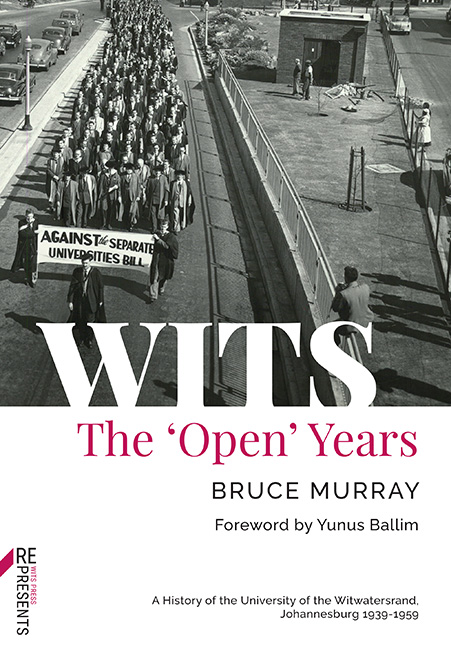6 - Profile of Wits
Published online by Cambridge University Press: 24 November 2023
Summary
The arrival of the ex-volunteers at Wits ushered in a new era in higher education in South Africa, one in which it became the norm for the substantial majority of white matriculants – those who satisfied the conditions of university entry – to proceed to university, although not necessarily directly. By the end of the 1950s, over three-quarters of white matriculants were going on to university; among English-speaking white men the proportion of matriculants entering university was as high as 90 per cent. For the four years 1958–61 the number of whites registering at one or other of the country’s residential universities for the first time amounted to a nearly constant 82–84 per cent of the previous year’s matriculants.
In South Africa, as in many countries elsewhere, World War II was a watershed in the development of higher education, leading to a vast growth in university enrolments, fuelled by a rising demand for trained professionals, rising expectations and rising birth rates, and financed in increasing measure by the state, which came to regard universities as engines of economic progress, both in training manpower and undertaking vital research. For the middle classes, and those with middle-class aspirations, a university training now became virtually essential to the pursuit of their careers. Among white South Africans it was a trend accentuated by white dominance of the ‘paying’ professions – medicine, dentistry, pharmacy, engineering, architecture, law and accounting – and the extension of the process by which the universities came to dominate training for the professions in South Africa. The other side of the coin was a tendency among the professional bodies to want to dictate academic curricula.
In the immediate post-war years the number of fully fledged residential universities in South Africa doubled with the grant of university status to Natal in 1948, the Orange Free State and Rhodes in 1949, and Potchefstroom in 1950, all previously university colleges under the umbrella of the University of South Africa. The South African Native College, Fort Hare, became the University College of Fort Hare as an affiliate of Rhodes University, while Unisa continued as a correspondence university.
- Type
- Chapter
- Information
- WITSThe 'Open' Years, pp. 137 - 171Publisher: Wits University PressPrint publication year: 2022



